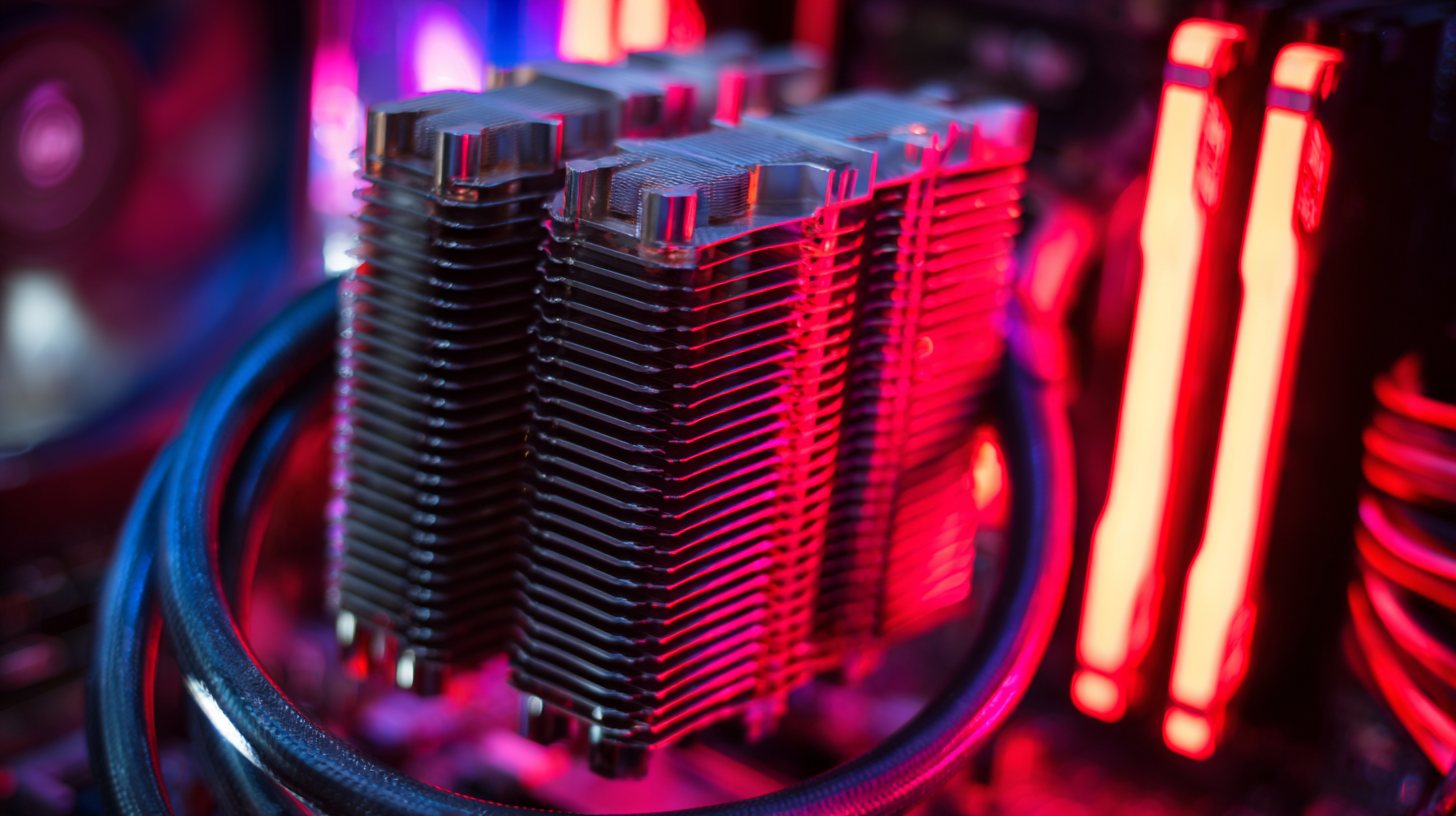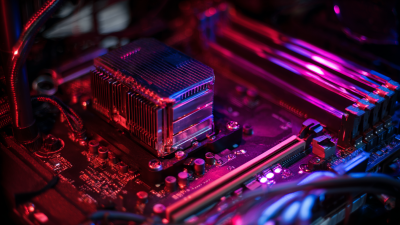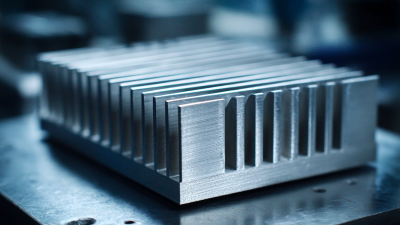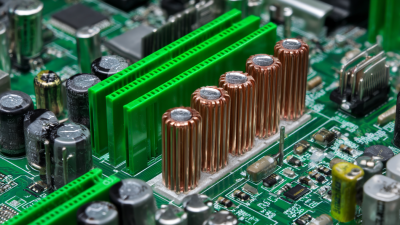Leave Your Message
In the world of computing, maintaining optimal performance is crucial, and one of the key components in ensuring this is the CPU heat sink. A CPU heat sink is a crucial thermal management device, designed to dissipate the heat generated by the processor during operation. As processors become increasingly powerful, the heat produced simultaneously rises, making the role of heat sinks more significant than ever. By facilitating efficient heat dissipation, these components help maintain lower temperatures, preventing thermal throttling and enhancing overall system performance. Understanding the structure, types, and effective functioning of CPU heat sinks is essential for anyone looking to optimize their computer’s efficiency and longevity.
 In this article, we will explore the various aspects of CPU heat sinks and their indispensable role in modern computing systems.
In this article, we will explore the various aspects of CPU heat sinks and their indispensable role in modern computing systems.
When it comes to cooling solutions for CPUs, two primary types dominate the landscape: air coolers and liquid coolers. Air cooling systems utilize a combination of heatsinks and fans to dissipate heat effectively. Recent advancements in air cooler technology have highlighted their reliability, longevity, and performance that can rival their liquid counterparts. They operate silently and require less maintenance, making them a preferred choice for many users, especially for high-performance gaming CPUs like the Ryzen 7 9800X3D, which has garnered acclaim for its gaming prowess.
On the other hand, liquid cooling solutions, particularly all-in-one (AIO) systems, are celebrated for their superior thermal efficiency. They excel at transporting heat away from the CPU, making them ideal for intensive tasks or overclocking scenarios. While some enthusiasts may lean towards liquid cooling for performance, ongoing discussions emphasize that high-end air coolers often provide adequate cooling without the added complexity and potential risks associated with liquid systems. Ultimately, the choice between air and liquid cooling hinges on individual needs, budget, and performance expectations in various computing scenarios.
Heat sinks are essential components in computer cooling systems, primarily relying on materials with high thermal conductivity. These materials efficiently transfer heat away from the CPU, preventing overheating and ensuring optimal performance. Commonly used materials include aluminum and copper, each possessing unique properties that make them suitable for different applications.
Aluminum is widely favored for its lightweight nature and cost-effectiveness. It has a decent thermal conductivity, typically around 237 W/m·K, allowing for effective heat dissipation. Additionally, aluminum can be easily extruded into various shapes, making it versatile for intricate designs that improve airflow and surface area. On the other hand, copper boasts superior thermal conductivity, around 400 W/m·K, making it more effective in quickly dissipating heat. This property makes copper ideal for high-performance applications where cooling efficiency is critical, despite its heavier weight and higher cost.
Other materials, such as graphite and some specialized polymers, are also being explored for their thermal management properties. Graphite, for instance, has excellent thermal conductivity and can be molded into various forms, providing flexibility in design while maintaining efficiency. The choice of material ultimately hinges on the specific cooling requirements and budget considerations, highlighting the crucial role that thermal conductivity plays in the performance of heat sinks.
| Material | Thermal Conductivity (W/m·K) | Density (g/cm³) | Melting Point (°C) | Cost (USD/kg) |
|---|---|---|---|---|
| Aluminum | 205 | 2.70 | 660 | 2.00 |
| Copper | 385 | 8.96 | 1085 | 9.00 |
| Nickel | 90 | 8.90 | 1455 | 20.00 |
| Graphite | 100-250 | 2.26 | 3652 | 3.00 |
| Ceramic | 20-30 | 3.60 | 2000 | 20.00 |
Heat sinks are crucial components that play a significant role in maintaining CPU performance. As processors work, they generate heat, which can lead to thermal throttling if not adequately managed. Several studies indicate that efficient heat sinks can lower CPU temperatures by as much as 20-30 degrees Celsius under load, thus preventing overheating and ensuring the processor operates at optimal speeds. For instance, modern heat sink designs, featuring multiple heat pipes and improved surface areas, can enhance heat dissipation significantly compared to older models.
Statistics reveal that a well-functioning heat sink can improve CPU performance by nearly 10-15% during intensive tasks such as gaming or video rendering. It has been shown that CPUs running at lower temperatures maintain higher clock speeds due to reduced thermal throttling intervals, leading to better overall efficiency. Moreover, manufacturers have found that user satisfaction increases when cooling solutions are optimized, highlighting the direct link between heat management and performance. This underscores the importance of selecting the right heat sink to elevate both temperature regulation and computational capabilities of modern CPUs.
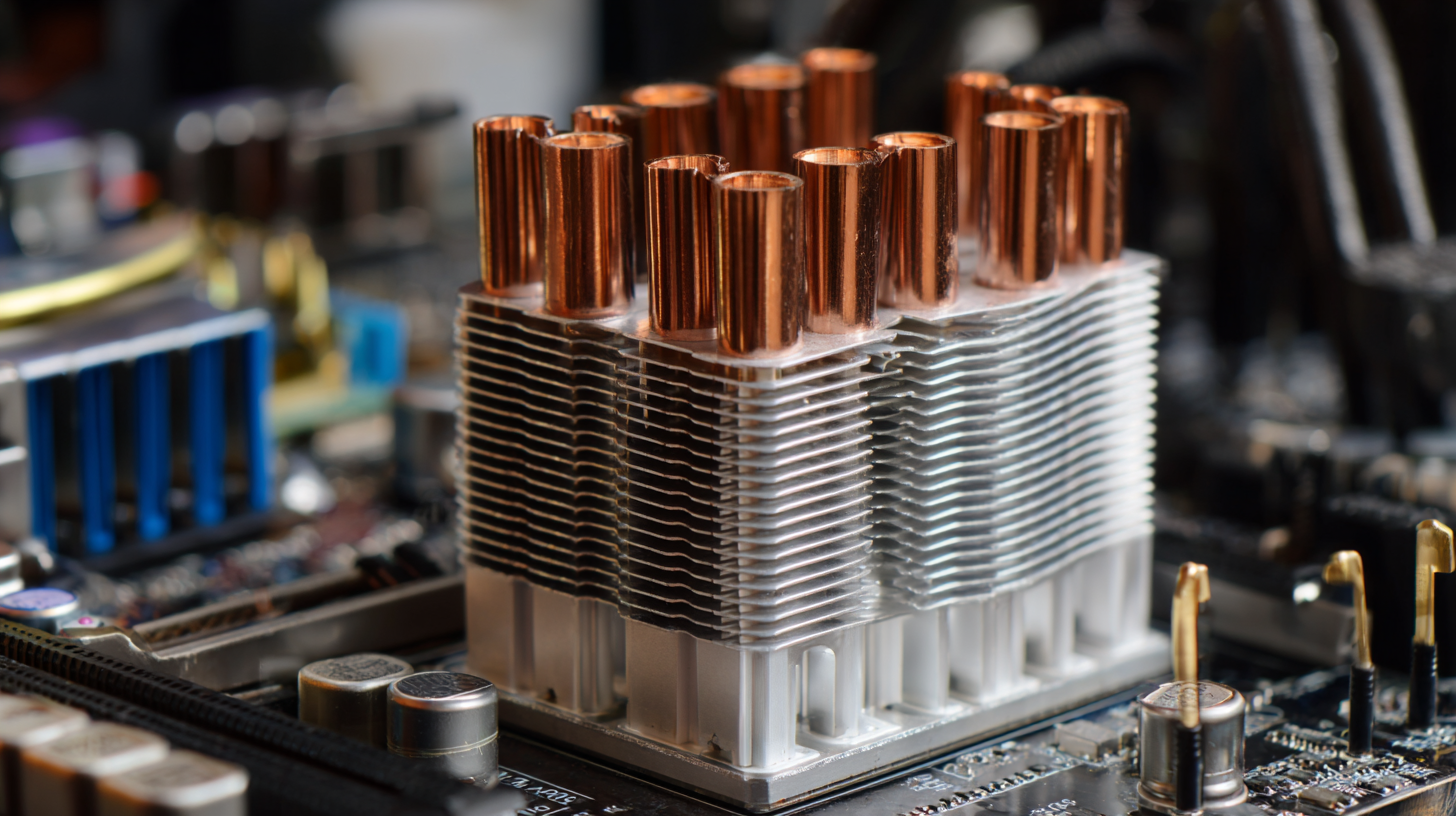
When it comes to the efficiency of CPU heat sinks, fan speed and airflow play crucial roles. A heat sink absorbs and disperses heat generated by the CPU, but without proper airflow, its effectiveness diminishes significantly. High fan speeds can enhance airflow, ensuring that hot air is expelled rapidly while cooler air flows in. This constant exchange helps maintain optimal temperatures, preventing thermal throttling and potential damage to components.
**Tip:** To optimize cooling efficiency, consider investing in fans with adjustable speed settings. This allows you to increase fan RPM during intensive tasks and lower it during lighter workloads, striking a balance between performance and noise levels.
Moreover, the positioning of fans can further influence airflow. In a typical setup, it's ideal to have an intake fan at the front and an exhaust fan at the back or top of the case. This layout promotes a streamlined airflow path, effectively channeling air over the heat sink, where it can cool the CPU efficiently.
**Tip:** Regularly clean your fans and heat sinks to prevent dust buildup, which can obstruct airflow and decrease cooling performance over time. Keeping your components clean not only contributes to efficiency but also extends their lifespan.
This chart illustrates the effectiveness of different fan speeds in maintaining CPU temperature. As fan speed increases, the temperature decreases, highlighting the critical role of airflow in the efficiency of heat sinks.
When selecting the right heat sink for various CPU architectures, it's essential to consider the specific thermal requirements of each processor type. For instance, AMD's Ryzen architecture typically requires more robust cooling solutions due to its higher thermal design power (TDP) ratings, often exceeding 95 watts, compared to Intel's Core i7 and i9 chips, which can range from 65 watts to 125 watts depending on the generation. According to a 2023 report by Jon Peddie Research, effective cooling can boost CPU performance by up to 20%, particularly in high-demand applications like gaming and data analysis.
Additionally, the form factor of the heat sink plays a crucial role in system compatibility and performance. For compact systems, low-profile heat sinks can be a perfect choice, but they may not provide sufficient cooling under heavy loads. In contrast, tower-style heat sinks offer superior airflow and cooling efficiency. Market analysis reveals that tower heat sinks dominate the market, with a predicted increase in demand of 15% annually through 2025, largely driven by the rise of high-performance computing and gaming setups. Choosing the right heat sink based on these factors ensures optimal thermal management, prolongs CPU lifespan, and maintains system stability.
